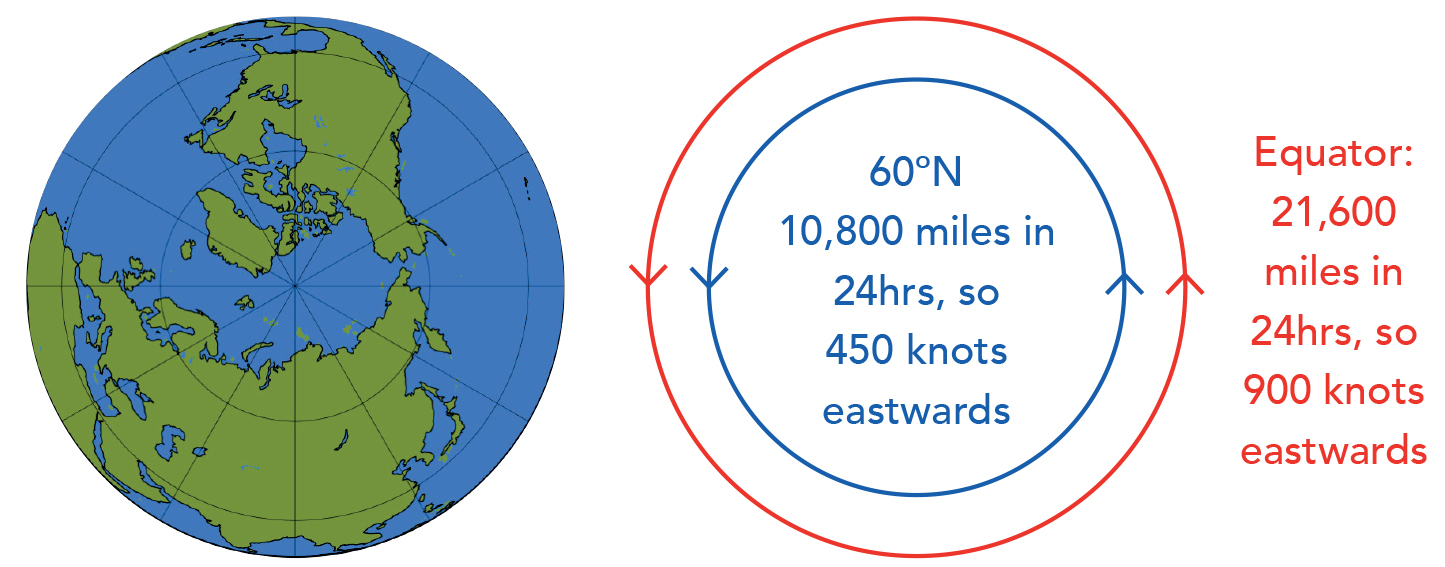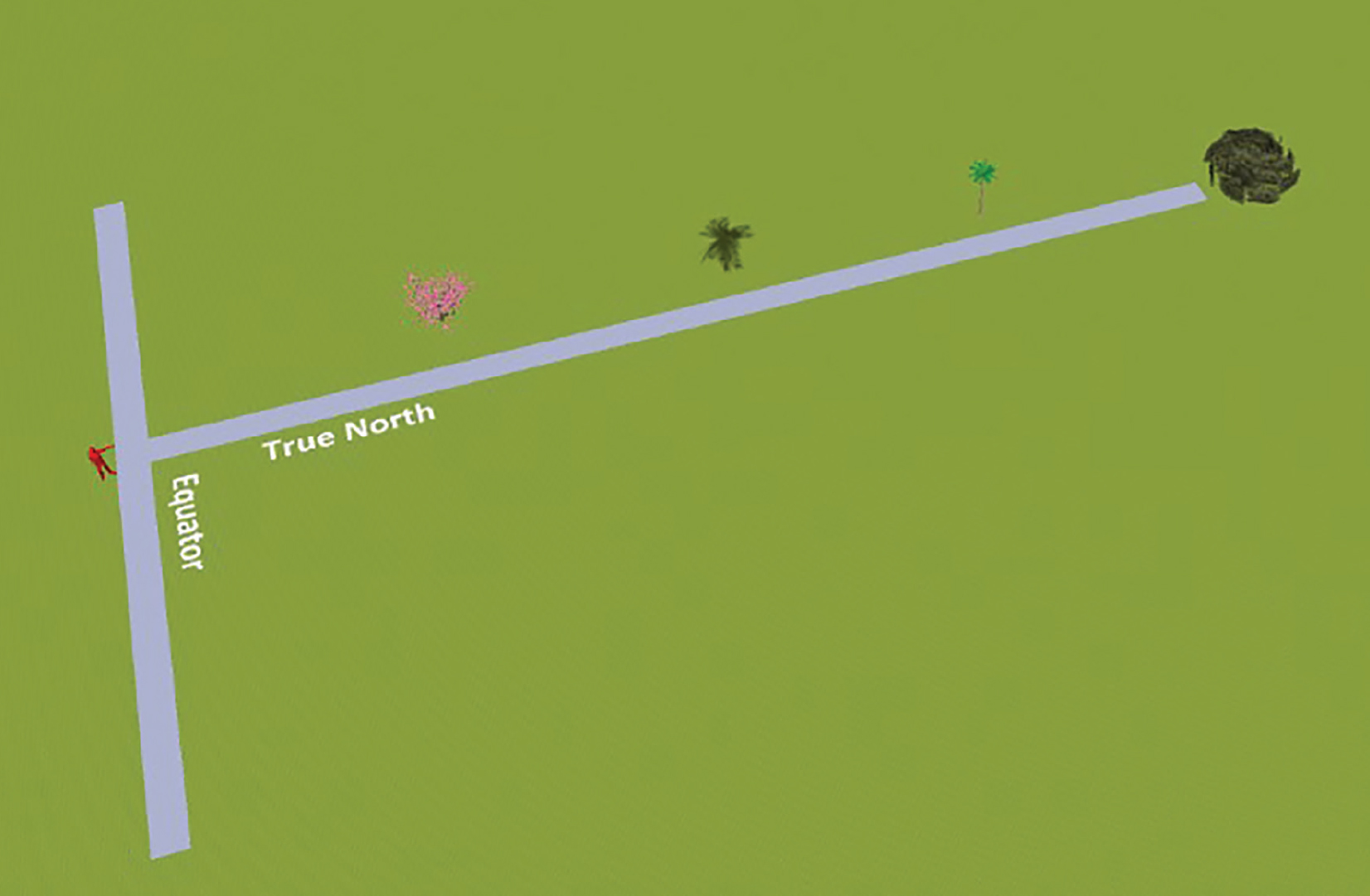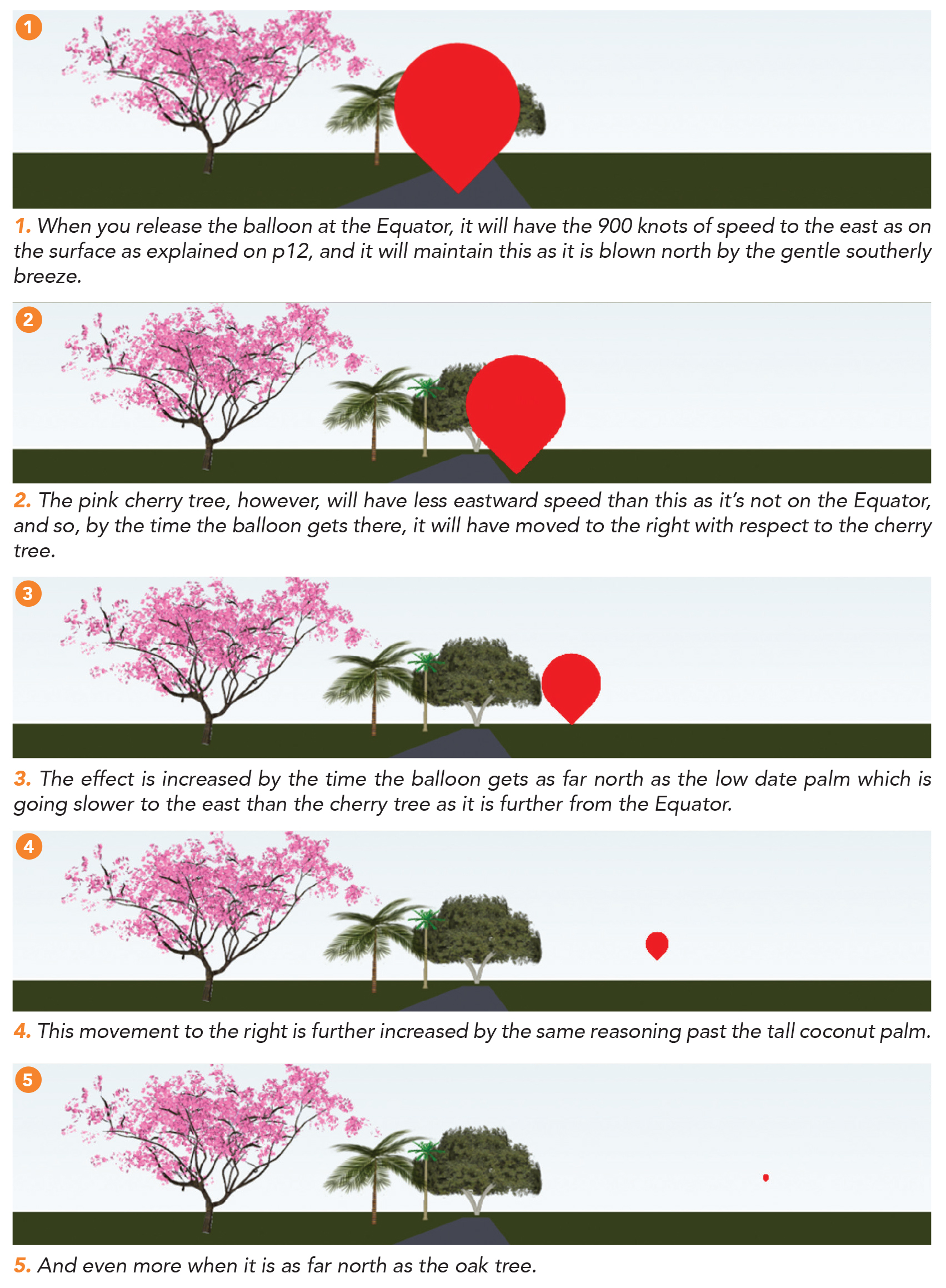The Coriolis Effect
Book Extract
Before we get into the Coriolis Effect itself, think of the atmosphere as being made up of discrete parcels of air which get moved around and expand and contract as per the laws of physics. This is a pretty good approximation to what actually happens – if you look at steam coming from a power station chimney, for example, it doesn’t immediately disperse but will stay in a reasonably organised column for a while. This will help understand what happens to the air.
The Coriolis Effect occurs because the Earth is both spherical and rotating to the east. This means that the eastwards speed of any part of the Earth’s surface depends on how far away from the Equator it is:
- At the Equator the ground moves eastwards at 21,600 miles every 24 hours, i.e. at 900 knots
- At 60ºN or S it is only 10,800 miles every 24 hours, i.e. at 450 knots
- At the Poles the ground doesn’t move eastwards at all

Viewing the Earth from above the North Pole: the differing east-going speeds of the Earth's surface at different latitudes
This means that, if there is no wind, the air parcels above the Earth are also moving eastwards at the same speed as the surface beneath them (like the steam from the chimney).
To explain what the Coriolis Effect does, imagine that you are standing on the Equator looking north at an oak tree, with a line of horticulturally unlikely trees on your left at regular intervals.

The scenario as seen from above: standing on the Equator looking at the oak tree directly north

The view looking north from the Equator (bottom) with a cherry blossom tree, a date palm, a coconut tree and finally an oak tree furthest (and directly) north
Imagine there is a gentle southerly breeze blowing and you then release a balloon at the Equator:

The effect is exaggerated in this example, but it is what happens in reality, and the motion of the balloon represents the motion of the air parcels around it.
This shows the Coriolis Effect – in the Northern Hemisphere it moves wind (and currents) to the right of their path, and in the Southern Hemisphere to the left. The effect increases with increasing latitude and with increasing wind speed.
It works whatever the initial direction of movement.
Try this – imagine a parcel of air coming due south at the oak tree. By the time it gets to the Equator it will have moved to its right.
© Not to be reproduced without written permission from Fernhurst Books Limited.
Weather At Sea is written by Simon Rowell. Simon Rowell is a world-class weather forecaster and yachting professional. He has skippered a yacht to victory in the Clipper Round the World Race and has been forecaster for that race since 2011. Since 2015 he has been the meteorologist for the British Olympic Sailing Team.